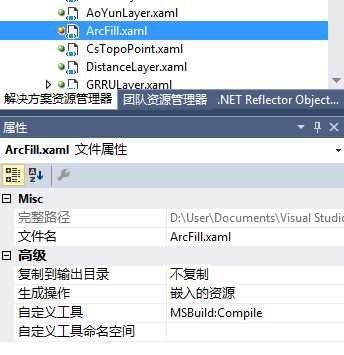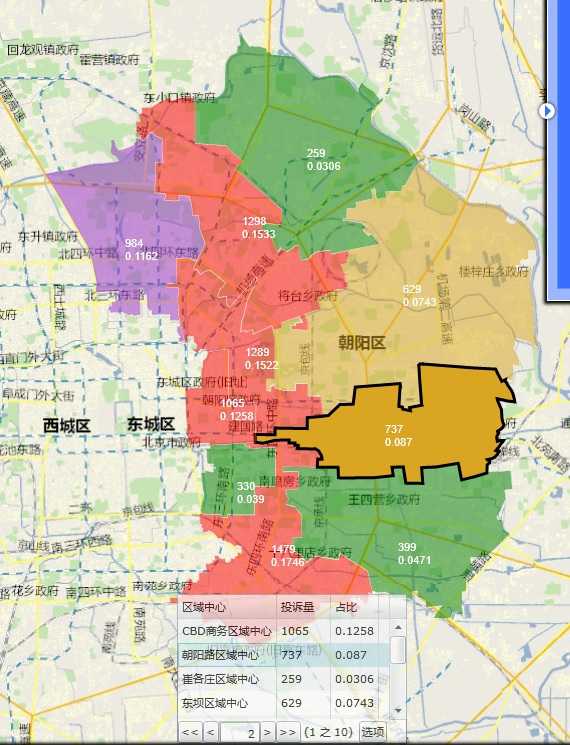You cannot create a ControlTemplate in Silverlight in C# alone. Unlike WPF (where you can set the VisualTree property), there is no property you can set that specifies the "content" of the ControlTemplate.
You can define your XAML as a string, and then load that dynamically in C# as explained by this blog post.
The code boils down to:
var template = (ControlTemplate)XamlReader.Load("<ControlTemplate " + " xmlns=\"http://schemas.microsoft.com/winfx/2006/xaml/presentation\"" + " xmlns:x=\"http://schemas.microsoft.com/winfx/2006/xaml\">" + " content here " + "</ControlTemplate>");
这是在 stackoverflow 找到的回答。XamlReader.Load(string xaml),这个xaml有限制,不能写 x:Name ,例如“<ControlTemplate x:Name=\"ctName\",这样写运行时报错。我找到的解决办法:
建立资源文件,将需要运行时修改的设计代码写入资源文件中。例如:
<?xml version="1.0" encoding="utf-8"?> <esri:SimpleFillSymbol xmlns="http://schemas.microsoft.com/winfx/2006/xaml/presentation" xmlns:x="http://schemas.microsoft.com/winfx/2006/xaml" xmlns:d="http://schemas.microsoft.com/expression/blend/2008" xmlns:mc="http://schemas.openxmlformats.org/markup-compatibility/2006" xmlns:esri="http://schemas.esri.com/arcgis/client/2009" > <esri:SimpleFillSymbol.ControlTemplate> <ControlTemplate> <Path x:Name="Element" Fill="Red" Stroke="White" StrokeThickness="0.4" Cursor="Hand"> <VisualStateManager.VisualStateGroups> <VisualStateGroup x:Name="SelectionStates"> <VisualState x:Name="Unselected"> <Storyboard> <ColorAnimation Storyboard.TargetName="Element" Storyboard.TargetProperty="(Path.Stroke).(SolidColorBrush.Color)" To="White" Duration="0:0:.25" /> <DoubleAnimation Storyboard.TargetName="Element" Storyboard.TargetProperty="StrokeThickness" To="0.4" Duration="00:00:.25" /> <DoubleAnimation Storyboard.TargetName="Element" Storyboard.TargetProperty="Opacity" To="0.5" Duration="00:00:.25" /> </Storyboard> </VisualState> <VisualState x:Name="Selected"> <Storyboard> <ColorAnimation Storyboard.TargetName="Element" Storyboard.TargetProperty="(Path.Stroke).(SolidColorBrush.Color)" To="Black" Duration="0:0:.25" /> <DoubleAnimation Storyboard.TargetName="Element" Storyboard.TargetProperty="StrokeThickness" To="3" Duration="00:00:.25" /> <DoubleAnimation Storyboard.TargetName="Element" Storyboard.TargetProperty="Opacity" To="1" Duration="00:00:.25" /> </Storyboard> </VisualState> </VisualStateGroup> </VisualStateManager.VisualStateGroups> </Path> </ControlTemplate> </esri:SimpleFillSymbol.ControlTemplate> </esri:SimpleFillSymbol>
我需要运行时修改 Fill="Red" ,这个颜色。建立资源文件:ArcFill.xaml,将代码写入,设置 ArcFill.xaml 的属性:生成操作 为 嵌入的资源,以供读取使用。

读取资源文件:
StreamReader reader = new StreamReader(System.Reflection.Assembly.GetExecutingAssembly().GetManifestResourceStream("StMap.Resource.ArcFill.xaml")); string strArcFill = reader.ReadToEnd();
SimpleFillSymbol sfs = XamlReader.Load(strArcFill) as SimpleFillSymbol;
资源文件文件中虽然包括了x:Name,但这样 XamlReader.Load 读取却没有任何问题。如果想改变颜色:
XamlReader.Load(strArcFill.Replace("Red", "Green")) as SimpleFillSymbol
这样直接查找替换,工作的很 OK,红色成功变成了绿色,完整的测试用代码:
StreamReader reader = new StreamReader(System.Reflection.Assembly.GetExecutingAssembly().GetManifestResourceStream("StMap.Resource.ArcFill.xaml")); string strArcFill = reader.ReadToEnd(); ClassBreaksRenderer newClassBreaksRenderer = new ClassBreaksRenderer(); newClassBreaksRenderer.Field = "投诉量"; newClassBreaksRenderer.Classes.Add(new ClassBreakInfo() { MinimumValue = 0, MaximumValue = 250, Symbol = XamlReader.Load(strArcFill.Replace("Red", "Blue")) as SimpleFillSymbol }); newClassBreaksRenderer.Classes.Add(new ClassBreakInfo() { MaximumValue = 500, Symbol = XamlReader.Load(strArcFill.Replace("Red", "Green")) as SimpleFillSymbol }); newClassBreaksRenderer.Classes.Add(new ClassBreakInfo() { MaximumValue = 750, Symbol = XamlReader.Load(strArcFill.Replace("Red", "Goldenrod")) as SimpleFillSymbol }); PictureMarkerSymbol p = new PictureMarkerSymbol(); newClassBreaksRenderer.Classes.Add(new ClassBreakInfo() { MaximumValue = 1000, Symbol = XamlReader.Load(strArcFill.Replace("Red", "DarkOrchid")) as SimpleFillSymbol }); newClassBreaksRenderer.Classes.Add(new ClassBreakInfo() { MaximumValue = 9999999, Symbol = XamlReader.Load(strArcFill.Replace("Red", "Red")) as SimpleFillSymbol }); GraphicsLayer graphicsLayer = MyMap.Layers["CY_L1"] as GraphicsLayer; graphicsLayer.Renderer = newClassBreaksRenderer;
效果图:

